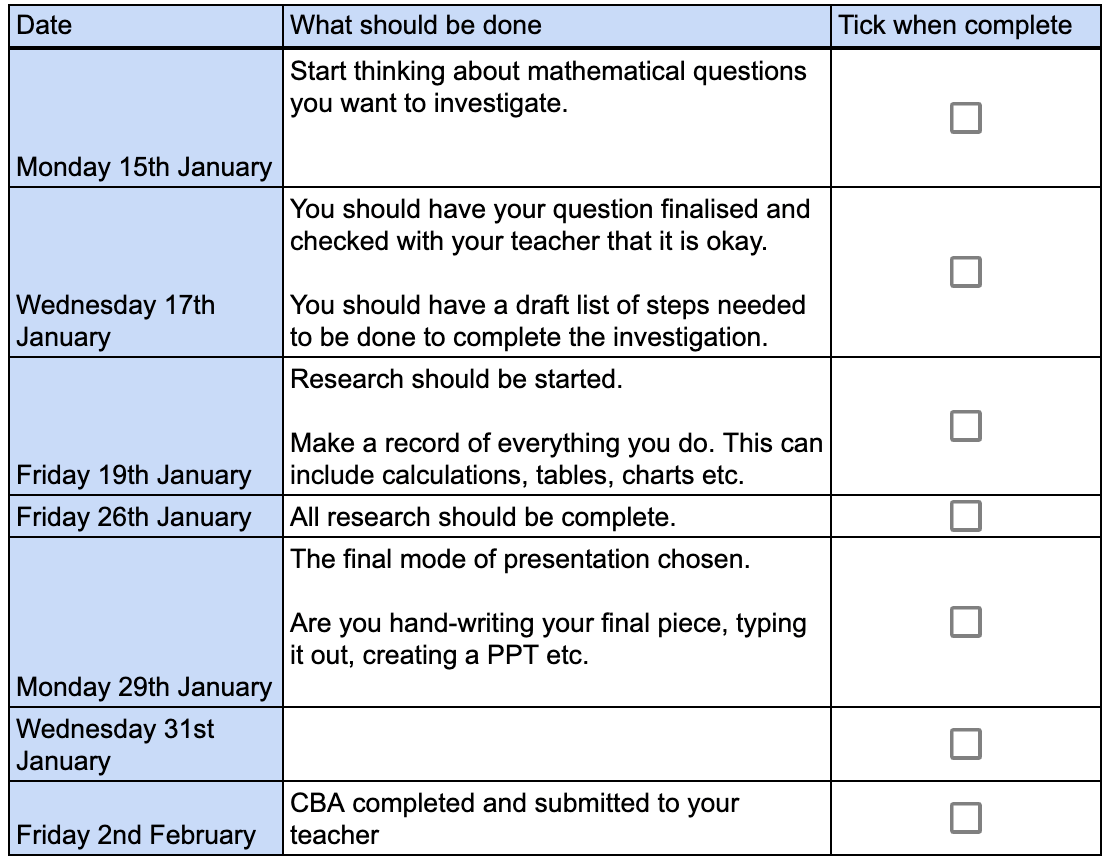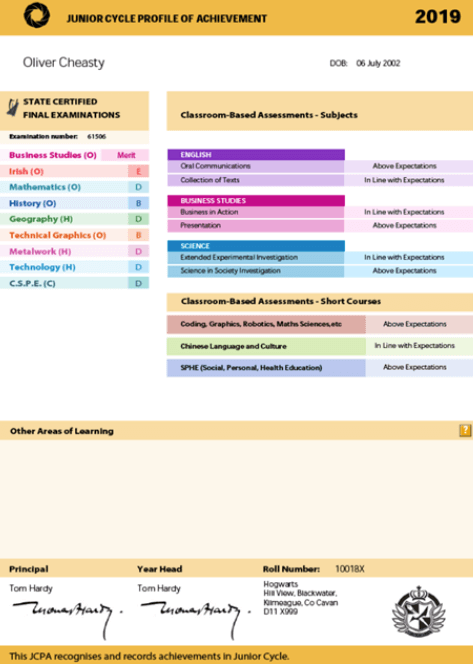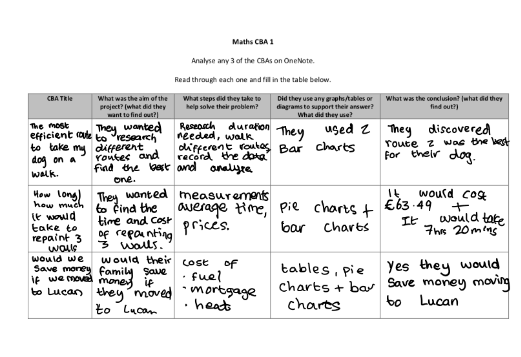By Conor Maxwell
Overview
The Junior Cycle brought around many changes within the classroom. The Framework for Junior Cycle (2015) outlines these key educational changes that the Department of Education and Skills put in place for students in the first three years of their post-primary education. Junior Cycle allows for new ways of learning and for a broader range of skills to be properly assessed. One of the most notable changes was the introduction of Classroom-Based Assessments and Assessment Tasks for each subject studied by students.
The Classroom-Based Assessment (CBAs) are designed to take place over three weeks throughout the school year for both second and third years. The Framework for Junior Cycle (2015) sets out that there is to be two CBAs completed for most subjects; one in second year, and one in third year.
However, students experienced disrupted periods of learning in 2020 and 2021 because of school closures introduced to curtail the Covid-19 pandemic. Despite the best efforts of teachers and schools to mitigate the effects of disrupted schooling, the learning experience of students varied. In this context, revised assessment arrangements were introduced and have remained in place for some cohorts students. The following arrangements are in place for current student:
Current 3rd year students: Only need to complete one CBA per subject studied. If they have already completed one in 2nd year, they may not have to do another this year. This is a choice made by individual schools and subject teachers.
Current 2nd year students: Will complete CBAs as outlined in the Framework for Junior Cycle (2015) i.e two CBAS, one in 2nd year, one in third year.
This blog post will give you some tips to set your students (and you!!) up for success while they are completing them.
Prior Exposure to Similar Tasks
Classroom-based Assessments provide students with opportunities to demonstrate their understanding and skills in a way which would not be possible in a formal examination. The assessments associated with CBAs cover a range of activities including oral tasks, written work of different types, practical or designing and making tasks, artistic performances, scientific experiments, projects or other suitable tasks depending on the subject in question.
Whatever task is to be completed in your subject it is advisable that the skill associated with the CBA is developed beforehand. For example, the first Science CBA that students complete in second year is an experiment-based investigation.
Students must devise and carry out an experiment to test a suitable hypothesis. This doesn’t mean that this should be their first time engaging with this sort of activity. Experimentation skills need to be worked on, and developed, long in advance of the CBA. Now, this does not mean giving “mock CBAs’ or the likes. It means giving students a chance to practice skills they are going to need as they move through their studies.
Have the discussion with your department colleagues about how this skill development can be built into your subject planning and give time to its development. Your students will see the benefit of it and will find the process of completing CBAs much less stressful.
What does good work look like?
I upload exemplars provided by both the NCCA and my own students. Throughout their first and second year, we ensure to give time to them to examine these exemplars.
It doesn’t have to be a significant amount of time, but it allows them to develop their evaluative skills and for them to become familiar with the idea of the Features of Quality.
Typically, we read through the Features of Quality together before examining a small extract from one of the exemplars.
Schedules and Deadlines
Three weeks is a significant amount for students to work on one piece of work. At this time, they need explicit instruction and clear guidelines as to when they need their work done for. I found it useful to have rough deadlines in place and available to them on the subject notebook. They could check in with these to assess their own progress and it made the final few days a lot easier on all of us when the final deadline was approaching.

Feedback
Feedback on performance is undoubted, one of the single most powerful influences on student achievement. It is highly important that as students move through the completion of their CBA effective feedback is provided to move their progress forward. My biggest takeaway from this process? Use audio feedback.
Features of Quality
CBAs are assessed at common level for all subjects and short courses. The grades of these CBAs will appear on a student’s Junior Cycle Profile of Achievement (JCPA) along with their final examination grades. An example of a JCPA can be seen below.

Achievement (JCPA)
There are a number of descriptors associated with the grading of CBAs. They are:
- Exceptional
- Above Expectations
- In Line with Expectations
- Yet to Meet Expectations
- Not Reported (This is where a student has not submitted any CBA for assessment)
For students, it is important that they know this terminology and how these grade descriptors are arrived at. This can be linked in with the exemplars mentioned earlier. Throughout their first and second year try and ensure to give time to them to examine these features of quality alongside the exemplars. It doesn’t have to be a significant amount of time, but it allows them to develop their evaluative skills and for them to become familiar with the idea of the Features of Quality.
Typically, in my class, we might read through the Features of Quality together before examining a small extract from one of the exemplars. It can be as easy as examining the charts and calculations produced as we study statistics in class. Are the charts accurate and drawn neatly? Is there an appropriate scale used on the axes? What about the calculations? Can we spot any errors?
All of this, while simple to execute, is allowing students to hone in on what will eventually be expected of them. Students have a chat with each other about areas they felt were really strong about the project, and areas that could have been improved. They, as they say themselves, “love being like a mini-examiner”. It all means that when their time comes to complete their CBA, the intricacies of the process are second-nature to them. This approach can be applied to any CBA in any subject.

Submission and Grading
Now for the tips that are going to make your life as a teacher easier! I can’t advocate enough for using the assignments feature on Teams to allow students to upload their work.
It centralizes everything for the teacher, meaning quick access to all of the CBAs, but it also makes corrections so much easier. To make your life easier, keep these things in mind:
Rubrics: Copy and paste the features of quality from the NCCA into the designated rubric section. This makes your corrections so much easier because you just have to select what descriptor each criterion of the CBA will get, before giving an overall grade.
You can find out how to do this in the video below.

